Ranking the top logistics cities in the United States involves considering various factors such as transportation infrastructure, proximity to major ports and airports, distribution facilities, population density, economic activity, and regional importance in logistics networks. Here’s a list of 50 cities that are typically recognized for their importance in logistics:
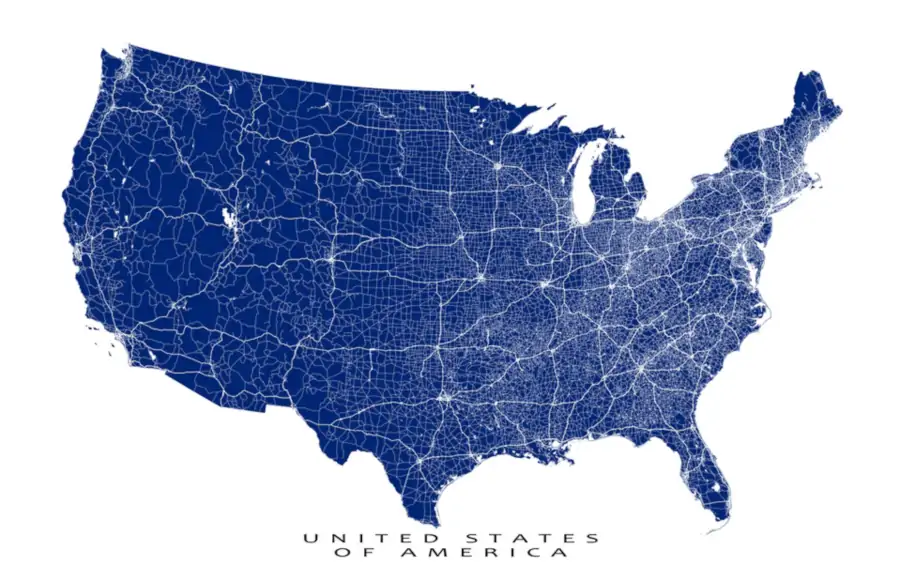
- Los Angeles, California
- Chicago, Illinois
- New York City, New York
- Atlanta, Georgia
- Dallas-Fort Worth, Texas
- Houston, Texas
- Miami, Florida
- Seattle, Washington
- San Francisco, California
- Memphis, Tennessee
- Newark, New Jersey
- Long Beach, California
- Oakland, California
- Charlotte, North Carolina
- Phoenix, Arizona
- Columbus, Ohio
- Detroit, Michigan
- Indianapolis, Indiana
- Philadelphia, Pennsylvania
- Baltimore, Maryland
- Denver, Colorado
- Jacksonville, Florida
- Portland, Oregon
- Nashville, Tennessee
- Kansas City, Missouri
- Minneapolis-St. Paul, Minnesota
- San Diego, California
- Salt Lake City, Utah
- St. Louis, Missouri
- Cincinnati, Ohio
- Orlando, Florida
- San Antonio, Texas
- Las Vegas, Nevada
- Austin, Texas
- Tampa, Florida
- Washington, D.C.
- Richmond, Virginia
- Milwaukee, Wisconsin
- Cleveland, Ohio
- Boston, Massachusetts
- New Orleans, Louisiana
- Fort Lauderdale, Florida
- Louisville, Kentucky
- Raleigh, North Carolina
- Sacramento, California
- Pittsburgh, Pennsylvania
- Oklahoma City, Oklahoma
- Buffalo, New York
- Hartford, Connecticut
- Greenville-Spartanburg, South Carolina
Keep in mind that the ranking might vary depending on the criteria used, and different reports might have slightly different lists.
Top 1 – Top 10
1. Los Angeles, California:

Los Angeles tops the list as the premier logistics city in the United States. It boasts the largest port complex in the country, comprising the Port of Los Angeles and the Port of Long Beach. With its extensive rail and highway networks, Los Angeles serves as a critical gateway for international trade and distribution, particularly for goods moving to and from the Pacific Rim.
Infrastructure highlights:
- Ports: Port of Los Angeles, Port of Long Beach
- Airports: Los Angeles International Airport (LAX)
- Other Infrastructure: Extensive highway network (Interstate 5, Interstate 10), rail connections (Union Pacific, BNSF Railway), distribution centers
2. Chicago, Illinois:

Chicago secures the second spot due to its strategic location at the heart of the Midwest. The city is a major transportation hub, intersected by several major railroads and highways. O’Hare International Airport, one of the busiest airports in the world, along with Midway International Airport, contribute to Chicago’s importance in air cargo logistics. Its central position makes it a vital distribution center serving the entire Midwest region.
Infrastructure highlights:
- Airports: O’Hare International Airport, Midway International Airport
- Other Infrastructure: Major rail hubs (Union Station, CSX’s Barr Yard), extensive highway network (Interstate 90, Interstate 94), distribution centers
3. New York City, New York:
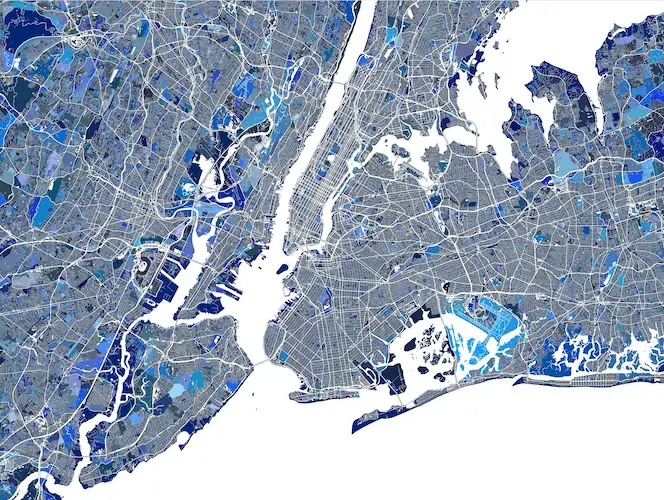
New York City ranks third, primarily driven by the Port of New York and New Jersey, one of the largest container ports in the country. With its proximity to major international markets and extensive transportation infrastructure, including John F. Kennedy International Airport and Newark Liberty International Airport, New York City serves as a critical hub for global trade and distribution along the East Coast.
Infrastructure highlights:
- Ports: Port of New York and New Jersey
- Airports: John F. Kennedy International Airport (JFK), Newark Liberty International Airport
- Other Infrastructure: Extensive highway network (Interstate 95, Interstate 78), rail connections (CSX, Norfolk Southern), distribution centers
4. Atlanta, Georgia:

Atlanta secures the fourth position due to its status as a major transportation nexus in the Southeast. Hartsfield-Jackson Atlanta International Airport, the busiest airport in the world by passenger traffic, plays a central role in air cargo logistics. Atlanta’s strategic location at the intersection of major highways and railroads, including Interstates 75 and 85, enhances its importance as a distribution hub serving the southeastern United States.
Infrastructure highlights:
- Airports: Hartsfield-Jackson Atlanta International Airport
- Other Infrastructure: Intermodal rail facilities, extensive highway network (Interstate 75, Interstate 85), distribution centers
5. Dallas-Fort Worth, Texas:

Dallas-Fort Worth ranks fifth, leveraging its central location in Texas and extensive transportation infrastructure. With Dallas/Fort Worth International Airport as a major air cargo hub and its proximity to the Port of Houston, the city serves as a vital logistics center for both domestic and international trade. The region’s extensive highway network, including Interstates 20, 30, and 35, further enhances its connectivity and distribution capabilities.
Infrastructure highlights:
- Airports: Dallas/Fort Worth International Airport, Dallas Love Field
- Other Infrastructure: Intermodal facilities, extensive highway network (Interstate 20, Interstate 30, Interstate 35), distribution centers
6. Houston, Texas:

Houston secures the sixth spot, driven by its prominence as a major port city and industrial hub. The Port of Houston ranks among the busiest ports in the United States, facilitating the movement of a wide range of goods, particularly energy-related products. Houston’s extensive highway network, including Interstate 10 and Interstate 45, along with its rail connections, solidify its position as a key logistics city in the Gulf Coast region.
Infrastructure highlights:
- Ports: Port of Houston
- Airports: George Bush Intercontinental Airport, William P. Hobby Airport
- Other Infrastructure: Extensive highway network (Interstate 10, Interstate 45), rail connections (Union Pacific, BNSF Railway), distribution centers
7. Miami, Florida:
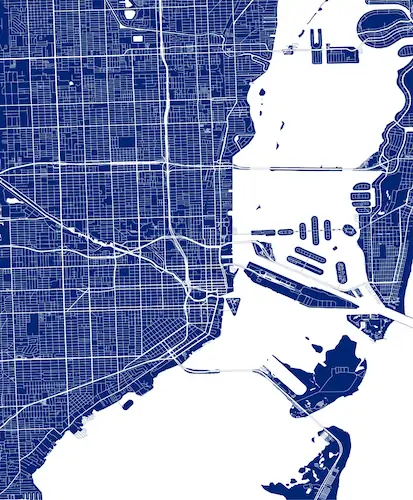
Miami occupies the seventh position, serving as a vital gateway for trade between the United States and Latin America. PortMiami, one of the busiest container ports in the country, facilitates significant volumes of international trade. Miami International Airport further enhances the city’s role in air cargo logistics, particularly for perishable goods and high-value commodities. Its strategic location in the southeastern United States positions Miami as a major distribution center for the region.
Infrastructure highlights:
- Ports: PortMiami
- Airports: Miami International Airport
- Other Infrastructure: Access to major highways (Interstate 95, Florida’s Turnpike), distribution centers
8. Seattle, Washington:
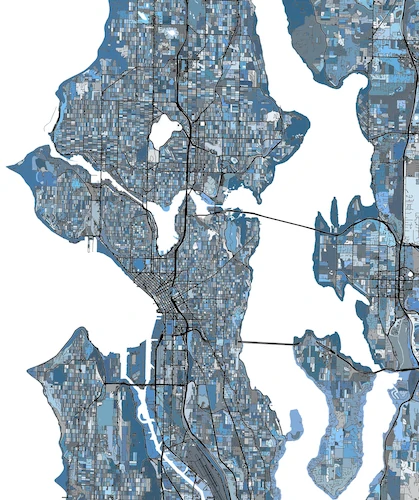
Seattle secures the eighth spot, driven by its strategic position on the Pacific Coast and extensive port facilities. The Port of Seattle and the Port of Tacoma handle substantial volumes of containerized cargo, serving as key gateways for trade with Asia and the Pacific Rim. Seattle-Tacoma International Airport further strengthens the city’s logistics infrastructure, while its rail connections and distribution centers support efficient supply chain operations throughout the Pacific Northwest.
Infrastructure highlights:
- Ports: Port of Seattle, Port of Tacoma
- Airports: Seattle-Tacoma International Airport (Sea-Tac)
- Other Infrastructure: Rail connections (BNSF Railway, Union Pacific), distribution centers
9. San Francisco, California:

San Francisco ranks ninth, leveraging its port facilities and proximity to major technology and manufacturing hubs. The Port of Oakland serves as a vital gateway for trans-Pacific trade, while Oakland International Airport facilitates air cargo logistics. San Francisco’s central location within the Bay Area, extensive transportation networks, and distribution capabilities contribute to its importance as a logistics city serving Northern California.
Infrastructure highlights:
- Ports: Port of Oakland
- Airports: San Francisco International Airport (SFO), Oakland International Airport
- Other Infrastructure: Extensive highway network (Interstate 80, Interstate 580), rail connections, distribution centers
10. Memphis, Tennessee:

US City Memphis rounds out the top 10, driven by its status as a major air cargo hub and distribution center. Memphis International Airport, home to FedEx’s global hub, handles a significant portion of the nation’s air freight, making it a crucial node in the global logistics network. The city’s central location within the United States, combined with its extensive highway and rail connections, solidify its position as a key logistics city in the Mid-South region.
Infrastructure highlights:
- Airports: Memphis International Airport (FedEx World Hub)
- Other Infrastructure: Extensive highway network (Interstate 40, Interstate 55), rail connections (Union Pacific, BNSF Railway), distribution centers
Top 11 – Top 20
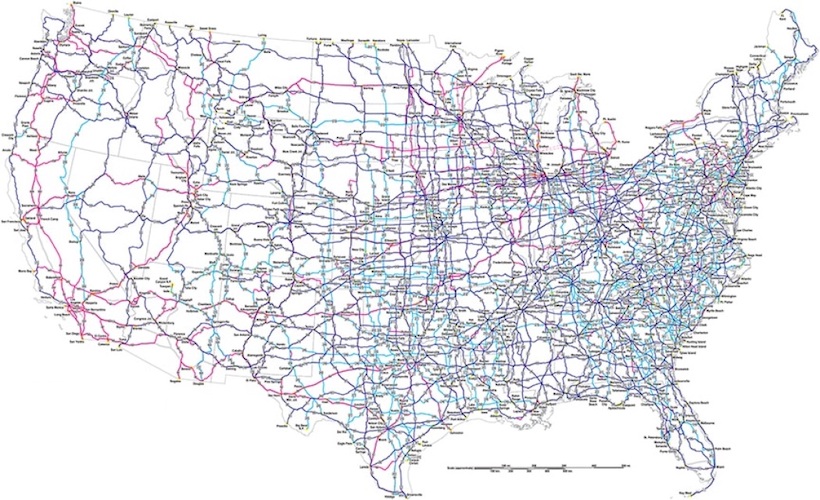
11. Newark, New Jersey: Newark’s location near New York City and its port facilities make it a key logistics city, especially for international trade and distribution along the East Coast.
12. Long Beach, California: Long Beach is one of the busiest container ports in the U.S., serving as a major gateway for trans-Pacific trade and a key logistics hub for Southern California.
13. Oakland, California: Oakland benefits from its port facilities and proximity to the San Francisco Bay Area’s population centers and industrial activity.
14. Charlotte, North Carolina: Charlotte’s central location in the Southeast, strong manufacturing base, and access to major highways and railroads contribute to its importance as a logistics center.
15. Phoenix, Arizona: Phoenix is a growing logistics hub due to its strategic location in the Southwest, extensive highway network, and distribution facilities serving the region.
16. Columbus, Ohio: Columbus is centrally located in the Midwest, making it a key distribution center with access to major highways and railroads.
17. Detroit, Michigan: Detroit benefits from its location near the Canada-U.S. border, automotive industry, and access to major highways and railroads.
18. Indianapolis, Indiana: Indianapolis is a major logistics center due to its central location, FedEx hub, and extensive distribution facilities.
19. Philadelphia, Pennsylvania: Philadelphia’s port facilities, extensive rail network, and proximity to major population centers contribute to its importance in logistics.
20. Baltimore, Maryland: Baltimore is a key port city on the East Coast, serving as a gateway for international trade and distribution in the Mid-Atlantic region.
Top 21 – Top 30
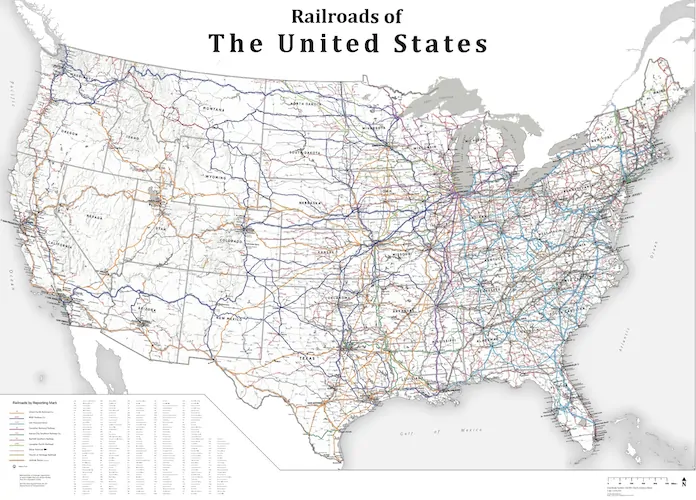
21. Denver, Colorado: Denver’s location as a crossroads for major highways and railroads, along with its growing population and economy, make it an emerging logistics hub.
22. Jacksonville, Florida: Jacksonville benefits from its port facilities, strong transportation infrastructure, and strategic location in the Southeast.
23. Portland, Oregon: Portland is a major logistics center due to its port facilities, access to railroads, and distribution capabilities serving the Pacific Northwest.
24. Nashville, Tennessee: Nashville’s central location, growing population, and transportation infrastructure contribute to its importance as a logistics hub.
25. Kansas City, Missouri: Kansas City benefits from its central location and extensive rail and highway networks, serving as a key distribution center in the Midwest.
26. Minneapolis-St. Paul, Minnesota: Minneapolis-St. Paul’s location in the Upper Midwest, strong manufacturing sector, and transportation infrastructure make it a significant logistics center.
27. San Diego, California: San Diego’s port facilities, proximity to the U.S.-Mexico border, and aerospace industry contribute to its importance in logistics.
28. Salt Lake City, Utah: Salt Lake City benefits from its central location in the Intermountain West, extensive rail connections, and distribution facilities serving the region.
29. St. Louis, Missouri: St. Louis is a major logistics center due to its central location, river port, and access to major highways and railroads.
30. Cincinnati, Ohio: Cincinnati’s location along the Ohio River, extensive distribution facilities, and access to major highways and railroads contribute to its importance in logistics.
Top 31 – Top 40

31. Orlando, Florida: Orlando’s proximity to major tourist attractions and theme parks, as well as its growing population and transportation infrastructure, make it an emerging logistics hub in Florida.
32. San Antonio, Texas: San Antonio benefits from its location in the heart of Texas, extensive highway network, and distribution facilities serving the region.
33. Las Vegas, Nevada: Las Vegas is a key logistics center due to its central location in the Southwest, major convention and trade show venues, and distribution capabilities.
34. Austin, Texas: Austin’s growing population, technology sector, and transportation infrastructure contribute to its importance as a logistics hub in Texas.
35. Tampa, Florida: Tampa benefits from its port facilities, strategic location on the Gulf Coast, and distribution capabilities serving Central Florida.
36. Washington, D.C.: Washington, D.C., is a major logistics center due to its proximity to government agencies, diplomatic missions, and distribution facilities serving the Mid-Atlantic region.
37. Richmond, Virginia: Richmond’s location along the James River, access to major highways and railroads, and distribution capabilities contribute to its importance as a logistics hub in Virginia.
38. Milwaukee, Wisconsin: Milwaukee’s location on Lake Michigan, access to railroads, and distribution facilities serving the Midwest contribute to its importance in logistics.
39. Cleveland, Ohio: Cleveland benefits from its location on Lake Erie, access to major highways and railroads, and distribution capabilities serving the Great Lakes region.
40. Boston, Massachusetts: Boston’s port facilities, access to major highways and railroads, and distribution capabilities contribute to its importance in logistics in the Northeast.
Top 41 – Top 50

41. New Orleans, Louisiana: New Orleans is a major port city on the Gulf Coast, serving as a gateway for international trade and distribution in the South.
42. Fort Lauderdale, Florida: Fort Lauderdale’s port facilities, proximity to major airports, and distribution capabilities contribute to its importance in logistics in South Florida.
43. Louisville, Kentucky: Louisville is home to UPS’s Worldport hub, making it a crucial center for air cargo and distribution services. It also has a central location in the Midwest.
44. Raleigh, North Carolina: Raleigh’s growing population, research institutions, and transportation infrastructure contribute to its importance as a logistics hub in North Carolina.
45. Sacramento, California: Sacramento benefits from its location along the Sacramento River, access to major highways and railroads, and distribution capabilities serving Northern California.
46. Pittsburgh, Pennsylvania: Pittsburgh’s location at the confluence of three rivers, access to major highways and railroads, and distribution capabilities contribute to its importance as a logistics hub in Western Pennsylvania.
47. Oklahoma City, Oklahoma: Oklahoma City’s central location in the U.S., access to major highways and railroads, and distribution facilities serving the region contribute to its importance in logistics.
48. Buffalo, New York: Buffalo’s location on the Great Lakes, access to major highways and railroads, and distribution capabilities contribute to its importance as a logistics hub in Western New York.
49. Hartford, Connecticut: Hartford’s location along the Connecticut River, access to major highways and railroads, and distribution capabilities contribute to its importance in logistics in Connecticut.
50. Greenville-Spartanburg, South Carolina: Greenville-Spartanburg benefits from its central location in South Carolina, access to major highways and railroads, and distribution capabilities serving the Southeast.
Criteria
Classifying cities into the top 50 logistics cities involves considering several key criteria related to their logistics infrastructure, connectivity, economic activity, and strategic importance in the distribution networks. Some of the primary criteria include:

- Transportation Infrastructure: The presence of major airports, seaports, rail terminals, and extensive highway networks is crucial. Cities with well-developed transportation infrastructure tend to have better access to global markets and efficient distribution networks.
- Port Facilities: Cities with major ports, especially those handling significant container traffic, are considered important in global logistics. Ports serve as gateways for international trade and play a vital role in supply chain logistics.
- Air Cargo Facilities: Cities with major airports, especially those with large cargo operations and airfreight hubs, are essential for expedited transportation of goods. Air cargo facilities contribute to the efficiency of logistics networks, particularly for time-sensitive shipments.
- Distribution Centers: The presence of distribution centers, warehouses, and fulfillment centers is indicative of a city’s role as a logistics hub. These facilities play a critical role in storing, sorting, and distributing goods within supply chains.
- Geographic Location: Cities situated in strategic geographic locations, such as central hubs or near major population centers, tend to be important logistics centers. Proximity to key markets, transportation corridors, and manufacturing centers influences a city’s significance in logistics.
- Economic Activity: Cities with robust economic activity, diverse industries, and strong manufacturing or trade sectors often have thriving logistics ecosystems. Economic vitality drives demand for transportation and distribution services, contributing to a city’s logistics prominence.
- Population Density: Cities with large populations or located within densely populated regions typically have higher demand for logistics services. Population density affects the volume of goods flowing through a city’s logistics networks and the need for efficient distribution channels.
- Intermodal Connectivity: Cities with well-integrated intermodal transportation systems, combining multiple modes of transportation (e.g., rail, trucking, maritime), offer efficient and flexible logistics solutions. Intermodal connectivity enhances supply chain resilience and reduces transportation costs.
- Industry Clusters: Cities hosting industry clusters or specialized sectors, such as automotive manufacturing, technology, or pharmaceuticals, often require sophisticated logistics infrastructure to support supply chain operations specific to those industries.
- Global Connectivity: Cities with strong international trade connections, including access to global markets and trade routes, are vital nodes in the global logistics network. Global connectivity enhances a city’s role as a gateway for international trade and logistics activities.
By evaluating cities based on these criteria, analysts can assess their importance in logistics and supply chain management, ultimately identifying the top logistics cities within a region or country.